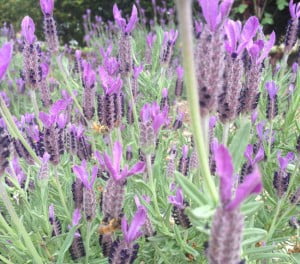
We thought it would be a good time to start up our beekeeping blog again – after a hiatus of a few years – to post some late summer advice as autumn is now officially upon us. We hope to keep these blog posts regular and informative – it’s our form of “after-sales service” and our way to support you on your beekeeping journey!
Summer is now over – officially at least – and we should check our hive if we have not looked at it for a while. We are hoping there might be honey we can take for ourselves but this may not be the case because it has been such an unusual summer and not all hives have done well at finding forage across the Melbourne suburbs.
Whenever we look in a hive we are checking a number of things; we want to know if the bees have enough food and we’re also checking to see how much stored honey there is. We can expect another two months of good weather when the bees will continue to store an excess of honey over their immediate needs.
If the hive is three levels we can take as much as is available on the third level. If the hive is only two levels, we would be more cautious as to how much we take from the second level as we must leave the hive with enough honey to get through winter; in this case, perhaps two full capped frames of honey is all we can take.
(Remember, if you need to hire an extractor, we can help you – just make sure you ring us to book one in advance – they’ve been busy lately!)
There are other things we should always check when we open the hive.
- We should scan for young larvae or eggs to verify the queen is healthy and laying. Her laying rate is already reduced form the peak of 2000 eggs a day in spring so bee numbers will fall as autumn approaches
- We also check for any sign of disease or the presence of pests in the hive. Here is a good link if you want more information on pests and diseases of the hive
- We also consider if the bees have enough or too much space. We can make space by taking honey if appropriate. It is too early to pack down for winter but we can make a plan based on what we see now.
The beautiful photo above shows some bees foraging on lavender in a garden at Trentham. Lavender is mostly finished now, but if you’re interested in common plants and flowers that attract bees, you can find some planting advice here and download a free ebook here from the Rural Industries and Development Corporation.
As always, if you are unsure about anything you are welcome to email, call or drop by to see us at Bee Sustainable and chat to one of the beekeeping staff about any issues.
And if you’d like your beekeeping advice delivered straight to your inbox, you can sign up here to receive our informative, seasonal newsletters.
Enjoy the last of the sun,
Robert and the Bee Sustainable team |